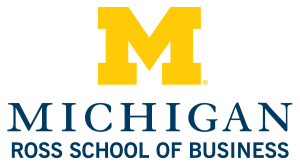Tohoku was not the first earthquake to impact Cisco’s operations in Japan. The company’s business continuity plan (BCP) and its SCRM capability was developed for exactly this type of incident. James Steele, program director of Supply Chain Risk Management (SCRM), started placing calls to his team. They would have to quickly develop a picture of what was at risk in Cisco operations as well as an understanding of the impacts to the hundreds of Cisco suppliers in Japan. With the help of his team, Cisco BCP, and the expertise of the broader Cisco Supply Chain organization, he felt confident that his team would be able to get the situation under control. Little did Steele and his team know in those early hours of the crisis that the initial earthquake would trigger a series of events that would cause the largest supply chain disruption in modern history.
Cisco SCRM in Action: 2011 Tōhoku Earthquake
by: Ravi Anupindi
Core Disciplines: Information - Technology & Management, International Business, Leadership/Organizational Behavior, Operations Management/Supply Chain, Strategy & Management
Available Documents
Click on any button below to view the available document.
Make sure you are registered and/or logged in to our site to view product documents. Once registered & approved, faculty, staff, & course aggregators will have access to full inspection copies and teaching notes for any of our materials.
$3.95
If you need to make copies, you MUST purchase the corresponding number of permissions, and you must own a single copy of the product.
Electronic Downloads are available immediately after purchase. "Quantity" reflects the number of copies you intend to use. Unauthorized distribution of these files is prohibited pursuant to term of use of this website.
Teaching Note
This product does not have a teaching note.
Description
Teaching Objectives
After reading and discussing the material, students should:
- Describe the size and scope of Cisco’s supplier footprint in Japan, then indicate what types of suppliers that footprint included, and what level of revenue would be impacted by a crisis like the Tohoku earthquake.
- Indicate what the impact of the earthquake and tsunami was on Cisco’s supplier footprint and identify what the company’s disposition was in relation to its suppliers during the crisis.
- Explain how Supply Chain Risk Management (SCRM) data from the organization’s business continuity planning program assisted Steele and his team with managing the crisis.
- Indicate if there is a way to structure and manage the crisis’s moving parts, and if as part of that plan, decision making should be centralized.
- Develop strategies and a communications plan to collaborate seamlessly across multiple groups, while coordinating the actions of key decision makers spread across the globe.

